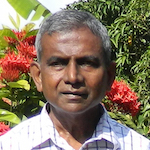The 1948 – 1949 Watershed: Remembering H. Sri Nissanka & T.B. Subasinghe

By Rajan Hoole –July 11, 2016
One could hardly fail to detect a note of despondency among writers who advance a constitutional settlement. Kalana Senaratne (Groundviews 26 Apr.2016) envisages that a settlement agreeable to the South would lean towards Sinhalese-Buddhist pre-eminence thereby leaving the Tamils dissatisfied. The only prospect of mitigating this eventuality, he suggests, is an arrangement ‘which tries to ensure that the natural and ineradicable dominance of the Sinhala-Buddhists does not result in the perpetration of a wilful and targeted policy of discrimination of minority groups’. Laksiri Fernando (Colombo Telegraph 1 May 2016), while finding the proposals by the Tamil People’s Council clear and well-drafted, is troubled by their lack of realism, ideological dependence on the LTTE and the mutation of its innate of brutality into virtue of ‘self-defence’.
The question one needs to ask is whether the terms of the debate centring on nationalities and ‘real-estate’ (Fernando) are mistaken. If we traverse back to understand the origins of the controversy, a settlement should be easier to identify. After all in early 1948 we had the Soulbury Constitution that nearly everyone accepted. What the Tamil leader Chelvanayakam sought then, was not federalism or separation, but parity of status for the two languages, as in Canada.
The problem as addressed for many years takes for granted the inequality that has come to be embedded in our institutional orthodoxy and administrative practices as the direct result of the three Citizenship Acts of 1948/49. Its consequences are the death of secularism and the rise of extremism even among minority religious groups that now canvass external protection. Attempted devolution has so far failed, because the starting point is a framework concealing inequality in equivocation, as for example the ambivalence about religion in our present Constitution. The fate of the Bandaranaike – Chelvanayakam Pact of 1957 is fairly explanatory of the present deadlock. Bandaranaike tore it up under pressure from extremist clergy, and as I understand from contemporary observers, Chelvanayakam was not too sorry over it.
Post-War Malaya and Ceylon
As Britain accelerated decolonisation after the War in 1945, both Malaya and Ceylon had large Indian immigrant populations – in Malaya the Chinese outnumbered the Indians. Many of the immigrants knew no other country. Under the Indian Emigration Act of 1922, the Indian Government permitted emigration of unskilled labour only to countries which provided reciprocal assurance of ‘perfect equality of status of Indians’ with other local British subjects.
In Ceylon the Soulbury Commission adapted the Ceylonese Ministers’ draft constitution of February 1944, and felt the retention of its provision prohibiting discriminatory legislation against any community or group (Article 29(2)) to be an adequate safeguard for minorities.
In Malaya, after due consultation, the British on 21st January 1948 obtained the signatures of the Sultans of the States to the Federation of Malaya Agreement. No one was permanently excluded from citizenship. For non-Malays, it placed a residence qualification of 15 years or 12 years at the time of application. A child whose father was born in Malaya was conferred citizenship. The Ceylon Citizenship Act was passed by Parliament on 20th August 1948, as the first major act after Independence, and was calculated to exclude permanently Indian immigrants to the largest extent possible, by introducing cut-off dates.
During the debate on the Citizenship Bills in the Ceylon Parliament, government spokesmen belittled and attacked Indian immigrants, as bearers of Cholera (Senanayake) who stole Kandyan lands from the peasants. The government insinuated that those who opposed the Citizenship Acts were traitors, both inside and outside Parliament, and aroused Sinhalese ire against them. T.B. Subasinghe (Bingiriya), himself a Kandyan, with quiet dignity exposed the hypocrisy of government leaders who wrongly blamed the Indian settlers living on large expanses of estates as responsible for landlessness among Kandyans. He pointed out that the government while vilifying the Indians, had no intention of taking over the estates to provide relief for landless Kandyan peasants; indeed they had assured European estate owners of security of their holdings.



